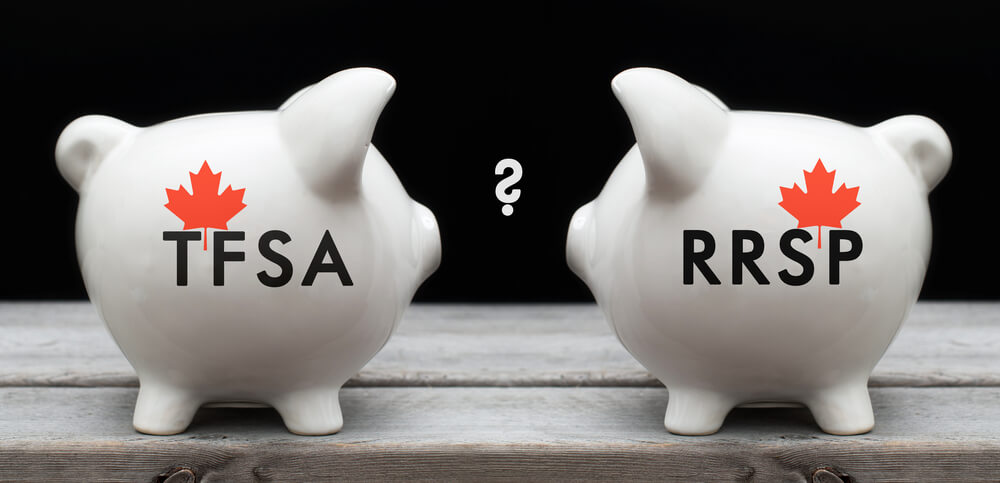
Article written by Chris Coulter
Everyone keeps talking about contributing to RRSPs and TFSAs, but not everyone clearly explains what they are or when you should contribute to these accounts.
What is an RRSP?
A Registered Retirement Savings Plan is a fund that is registered with CRA. It effectively lets you contribute towards your retirement, and deductible RRSP contributions can be used to reduce your tax. This is particularly attractive at tax time.
You can contribute up to 18% of your annual gross salary into your RRSP each year. For 2018, the maximum contribution level is $26,500 – that is if you have T4 income of $147,500 or more. Any unused RRSP room can be contributed at any point in the future.
As an example, if you have T4 income of $150,000, you are eligible to contribute up to $26,500 for the current year, plus any unused RRSP room that you were eligible to contribute to in previous tax years.
If you contributed $20,000 to your RRSP, you would lower your taxable income by $20,000. So, instead of paying tax based upon a salary of $150,000, you would be taxed as if you made $130,000 ($150,000-$20,000). That $20,000 then gets put into your RRSP account where it can grow tax-free until you decide to access the funds.
If you have an employer that contributes to your retirement through a Group RRSP or Group Pension plan, the amount contributed throughout the course of the year is removed from your eligible RRSP contribution amount for that year. Your employer should adjust your take-home pay to reflect the amount that you will be contributing at your revised tax rate.
An RRSP is encouraged to be started as early as possible because it can grow into a significant amount by the time you decide to access it in your retirement years. You will probably start using your RRSP when you stop working and are on a fixed income, and your tax rate will reflect how much income you take in a given year.
What is a TFSA?
A Tax-Free Savings Account is another registered plan, introduced by the federal government in 2009. Unlike the RRSP, the TFSA is not dependent upon income earned, but instead focuses on age (specifically when between 2009 and the present, you turned 18). The contribution amounts are laid out in the following:
| Years | TFSA Annual Limit | Cumulative Total |
| 2009–2012 | $5,000 | $20,000 |
| 2013–2014 | $5,500 | $31,000 |
| 2015 | $10,000 | $41,000 |
| 2016–2018 | $5,500 | $57,500 |
| 2019 | $6,000 | $63,500 |
If you were 18 years of age or older in 2009, by 2019 you would be eligible to contribute up to $63,500 if you hadn’t contributed anything until this year.
The TFSA are contributed in after-tax dollars, but any amount contributed can grow tax-free and can be “cashed-in” tax-free.
As an example, if you had contributed the maximum amount of $63,500 and it had grown in your TFSA to $100,000, you would be able to access the entire $100,000 tax-free. If this had been in a non-registered account, the growth would have been subject to capital gains tax.
The other beautiful feature of a TFSA – any amount of funds taken out can be replenished the following year. Using the example of the $63,500 that has grown to $100,000 in 2019, you could take out the $100,000 from your TFSA, and in 2020 your new TFSA maximum contribution amount would still be $100,000, plus the TFSA annual amount for 2020!
So TFSA or RRSP?
Each has great benefits for individuals depending on their investment goals. A RRSP allows a larger amount to grow (because it’s contributed tax-free), and can grow to a significant amount over time. When it comes time to access your RRSP funds, it will be subject to a tax-rate at the time that you access it.
A TFSA, although contributed with after-tax dollars, can grow to any amount without attracting any additional tax in the future.
If you are saving for a trip or a car, the TFSA is a better vehicle to use as it’s designed to grow tax-free, and any amount taken out of a TFSA can be replenished in the future.
Both offer a multitude of investment options to help you reach your financial goals. Ideally, both should be utilized as part of a smart savings and retirement portfolio as the tax advantages can be significant.
If you hold onto both your TFSA and RRSP as a part of your retirement strategy, you would likely use up your TFSA first as it would not attract any tax, and this could allow you to grow your RRSP account further until you need to access it.
Finally, investing in either an RRSP or TFSA is not without risk and volatility. It’s advised that you work with a professional financial advisor to diversify your portfolio and asset allocation, minimize the fees that you pay, and invest with a strategy that is suitable to your risk tolerance.
%201.png?)
